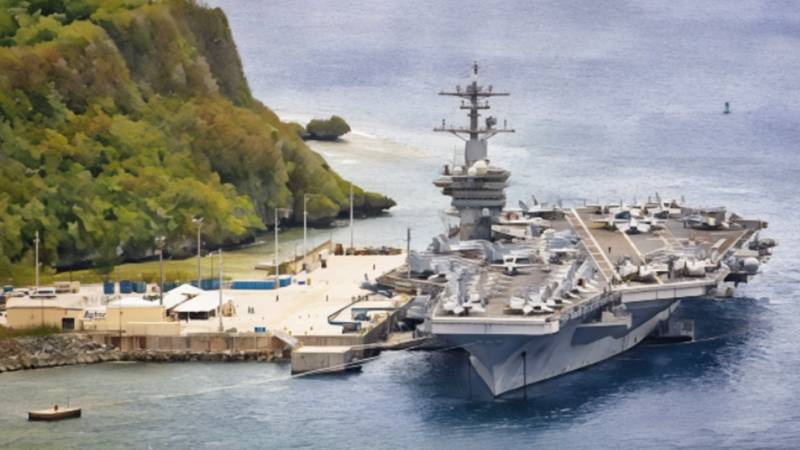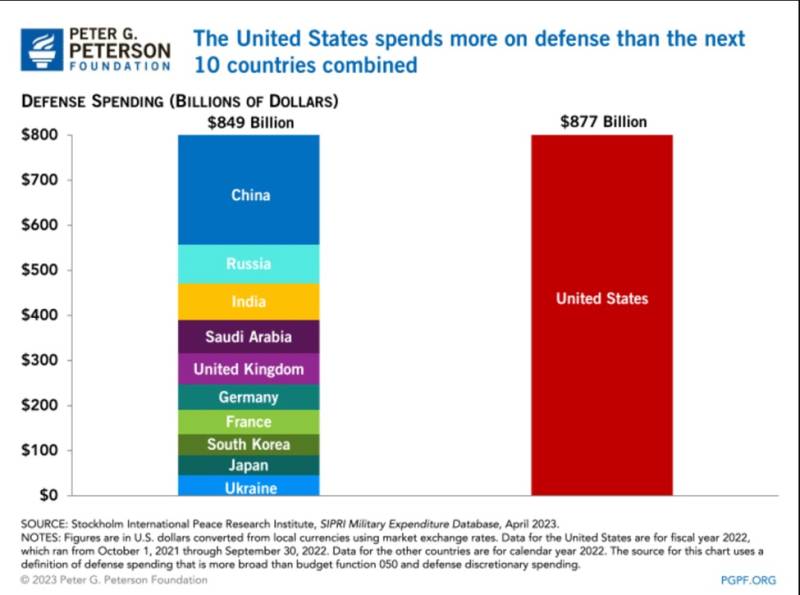
This year, the US is spending nearly $900 billion on its military, an amount that exceeds the combined military spending of the next 10 countries, including its arch-rivals China and Russia. With only 4% of the world population, it accounts for 40% of global military expenditures. Today the US has 1.3 million military personnel on active duty and another 800,000 in reserve. It also has an incredible array of nuclear weapons which can be delivered within minutes to any corner of the globe.
No country in the world has the capacity or the will to attack such a heavily armed nation. Indeed, no country has attacked the US since the Japanese bombed Pearl Harbor on 7 December 1941. In return, the US hit them with two atomic bombs in August 1945.
On the other hand, the US has attacked, invaded and occupied Vietnam, Afghanistan and Iraq, only to be defeated in the end. In 1975, the North Vietnamese drove the US out of Saigon. The image of US helicopters flying off the top of the US embassy in Vietnam is riveted onto global memory.
In 1991, the US invaded Kuwait to evict the Iraqi forces. In so doing, it did not think through the consequences. The presence of non-Muslim forces in Saudi Arabia, site of the two holiest mosques, triggered large-scale resentment, led to the birth of Al-Qaeda and ultimately to the 9/11 catastrophe.
In December 2001, the US toppled the Taliban regime which was harbouring Osama bin Laden. But even after 20 years, it failed to install a pro-Western democracy in Kabul. The pictures of US transport aircraft flying Americans out of Kabul were televised throughout the globe.
In 2003, Saddam Hussain, falsely accused of posessing weapons of mass destruction, was deposed in a matter of weeks. Soon enough, President Bush proudly stood on the deck of an aircraft carrier, USS Abraham Lincoln, and declared, “Mission Accomplished.”

Totally ignorant of Iraqi culture, the US disbanded Saddam’s army and political party, unleashing mayhem on the streets. Sectarian rivalries, dormant for a long time, returned with a vengeance. ISIS was born, replacing Al-Qaeda as the strongest terrorist organisation. Iran, the US’ archenemy in the region, won that war without firing a shot.
Just about all US citizens are confronted with an aging transportation infrastructure. Hardly a day passes by without people driving over potholes. Traffic jams are common and bridges overcrowded during commute hours. Flights are often delayed because of a bad runway
According to the Watson Institute at Brown University, the US has spent $8 trillion on fighting a so-called “war on terror” since 9/11. This amount has added to the national debt, which now stands at a colossal $35 trillion. It is estimated the interest payments on the $8 trillion will cost over $6.5 trillion by the 2050s.
The Pentagon is much better funded than the State Department. When it comes to resolving foreign policy crises, the first US response is to send an aircraft carrier, nuclear submarines and other warships to the region. We are seeing this drama playing out in the waters near Iran. The USS Abraham Lincoln is again in the news.
Who wins and who loses from military spending? The winners are those who invest in or are employed by companies that manufacture arms and ammunition, those who are employed in the military and in those businesses that provide services to the military, such as food, clothing, housing and transportation. President Eisenhower’s warnings about the “Military-Industrial Complex” have been ignored.
This list of winers is dwarfed by the list of losers. These include all those countries who have been invaded and occupied by the US. They have lost millions of lives and been left with destruction on a scale rarely seen in history. In Vietnam alone, an estimated 3 million were killed.
In the US, the first category of losers is those who fought and died or were injured or traumatised in the wars. In Vietnam, 58,000 Americans were killed and many more wounded or traumatised.
In the second category are the millions of Americans who are homeless, those who go to sleep hungry at night, people who subsist on a minimum wage, people who don’t have access to medical care, people who have no money to educate their children, and seniors who are eking out an existence just on social security.
As Senator Bernie Sanders pointed out, in the US “12 million seniors are worried about not having enough food to eat. Nearly 25% of our nation’s seniors are socially isolated. 25% of seniors suffer from tragic falls. That should not be happening in the richest country in the history of the world.”
In addition, just about all American citizens are confronted with an aging transportation infrastructure. Hardly a day passes by without people driving over potholes. Traffic jams are common and bridges overcrowded during commute hours. Flights are often delayed because of a bad runway.
Finally, there is the rising problem of rising crime, not just in major cities but now also in the suburbs.
The opportunity costs of unmitigated military spending are enormous. It harms hundreds of millions, not just in the US but globally. But that story never makes the news.
The goal of any government, especially a democracy that claims to be the greatest nation on earth, should be to enhance the well-being of its people. What is the point of arming ourselves to the teeth and preparing for an attack that is unlikely to occur, given our humungous nuclear arsenal?
What is the point of fighting wars in remote corners of the globe to establish a new democratic world order? History is proof that such wars are unwinnable, and the strategic culture of countries can only be changed from within.
If the US were to reduce its military spending by 25%, it would still outspend its main rivals, China and Russia, combined. A good chunk of the roughly $200 billion in savings could be used to house the homeless, provide food for the hungry, treat the sick, improve the roads and lower crime. Additional cuts could be used to lower the national debt.

